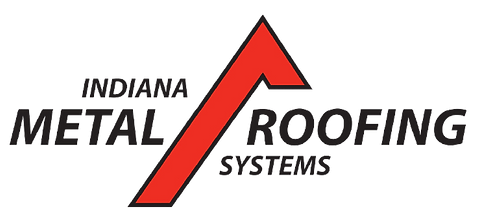What to Do If You Suspect Structural Damage to Your Roof
- Joseph Justice
- Dec 2, 2024
- 3 min read
Structural damage to your roof can lead to severe problems if left unaddressed. It’s essential to recognize the signs early and take immediate action. At Indiana Metal Roofing Systems, we’ve seen how proactive roof maintenance can prevent costly repairs and ensure your home remains safe.

Identifying Signs of Structural Damage
The first step is to identify any signs of structural damage. Common indicators include:
Sagging rafters or rooflines
Cracked chimneys or walls
Leaks around windows, ceilings, or walls
Separation of walls from joints or framing
Missing or damaged shingles or noticeable roof sagging
Visible signs of distress, such as buckled rooflines or water stains on ceilings, should never be ignored. In severe cases, you may notice large cracks or gaps in the roof structure.
Unique Fact: Water stains on ceilings indicate hazardous water infiltration that can undermine a building's structural integrity. Neglecting these warnings can result in significant damage and expensive repairs.
Understanding the Severity of the Damage
Once you’ve identified potential structural damage, it’s crucial to understand its severity. The best way to assess the extent of the damage is by scheduling a professional inspection. A certified roofing expert can evaluate your roof for weakened areas, identify leaks, and suggest necessary repairs. Even minor damage can lead to significant issues if not addressed promptly.
Contacting a Professional for an Inspection
If you suspect structural damage, contacting a professional roofer is essential. Choose a contractor who is licensed, insured, and experienced in handling structural issues. A thorough inspection will help identify the exact problem and provide an accurate repair plan. At Indiana Metal Roofing Systems, our team specializes in roof inspections and repairs, ensuring your roof is structurally sound.
When selecting a contractor, always ask for multiple quotes, read reviews, and ensure the roofer has experience with similar projects.
Estimating Repair Costs
Repair costs can vary depending on the extent of the damage. Common repairs might include replacing damaged shingles, reinforcing rafters, or fixing leaks. While addressing structural damage can be expensive, the cost of ignoring it is far higher. Major roof collapses or water damage can affect the integrity of your entire home, leading to even more significant expenses.
Consider the long-term savings when weighing the cost of repairs versus the potential cost of neglecting the damage.
Gathering Materials for Repairs
Once the damage has been assessed, your contractor will help gather the necessary materials for repairs. Depending on the type of roof and the extent of the damage, this could include:
Shingles or tiles to replace damaged areas
Flashing to seal around chimneys, vents, and joints
Reinforcements for rafters or weak structural elements
Waterproofing materials to prevent future leaks
Choosing high-quality materials is critical to ensuring the durability and longevity of your roof. Proper materials will help prevent future damage and protect your home from the elements.
Taking Safety Precautions
Before beginning any roof repairs, ensure that all safety measures are in place. If you plan to inspect the roof yourself, use proper equipment like ladders and safety harnesses, and always work with a partner for added stability. However, it is generally recommended to leave roof repairs to professionals, as they have the expertise and equipment to work safely at heights.
Completing the Repairs and Maintenance
Once the structural damage has been addressed, it’s important to ensure all repairs are completed thoroughly. Repairs may include:
Replacing damaged rafters or shingles
Reinforcing weak joints and flashing
Sealing areas to prevent future water infiltration
Ensuring proper drainage by cleaning gutters and downspouts
After repairs are complete, regular maintenance is key to preventing future structural issues. Schedule regular roof inspections and address any minor issues promptly to avoid costly repairs down the road.
FAQs
1. What should I do if I notice sagging in my roof?Sagging is a serious sign of structural damage. Contact a professional roofer immediately for an inspection to assess the extent of the damage.
2. Can I repair structural roof damage myself?Roof repairs, especially structural damage, should be handled by professionals to ensure safety and proper repair.
3. How much do roof repairs typically cost?Repair costs vary based on the extent of the damage, but prompt repairs are always more affordable than allowing the damage to worsen.
Conclusion
Suspecting structural damage to your roof can be stressful, but taking immediate action can prevent further complications. Regular inspections, proper maintenance, and timely repairs are essential to preserving your roof’s integrity. Trust the professionals at Indiana Metal Roofing Systems to assess and repair any damage, ensuring your roof remains secure and functional for years to come.
Want to know more about how roof inspections can save you money? Click here to learn about the financial benefits of regular inspections.


Comments